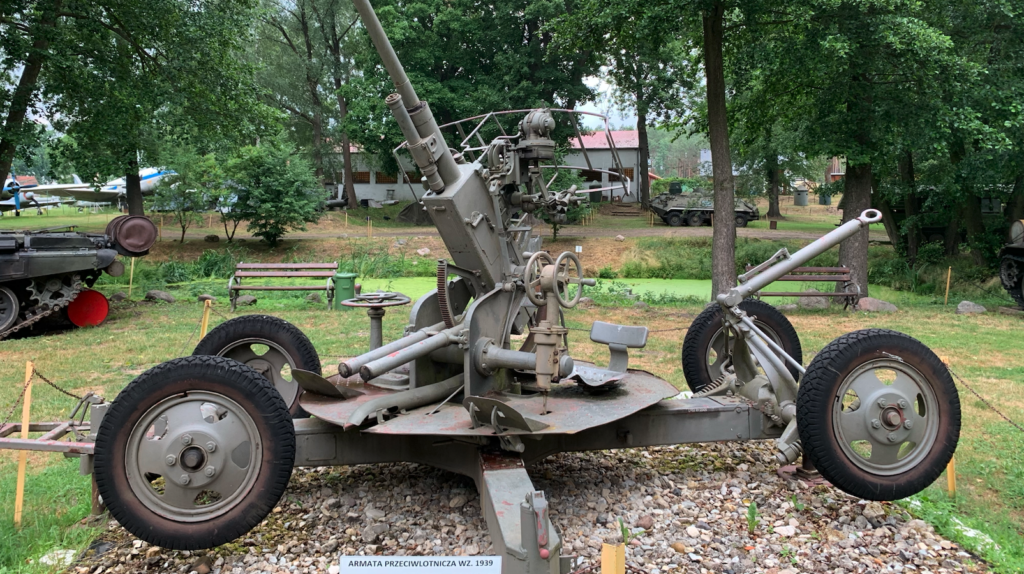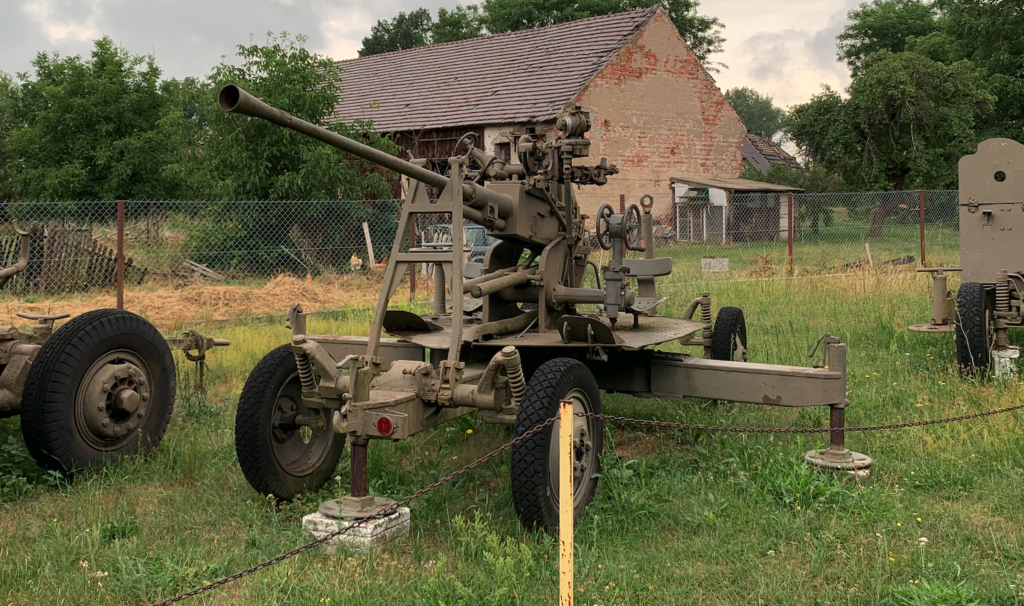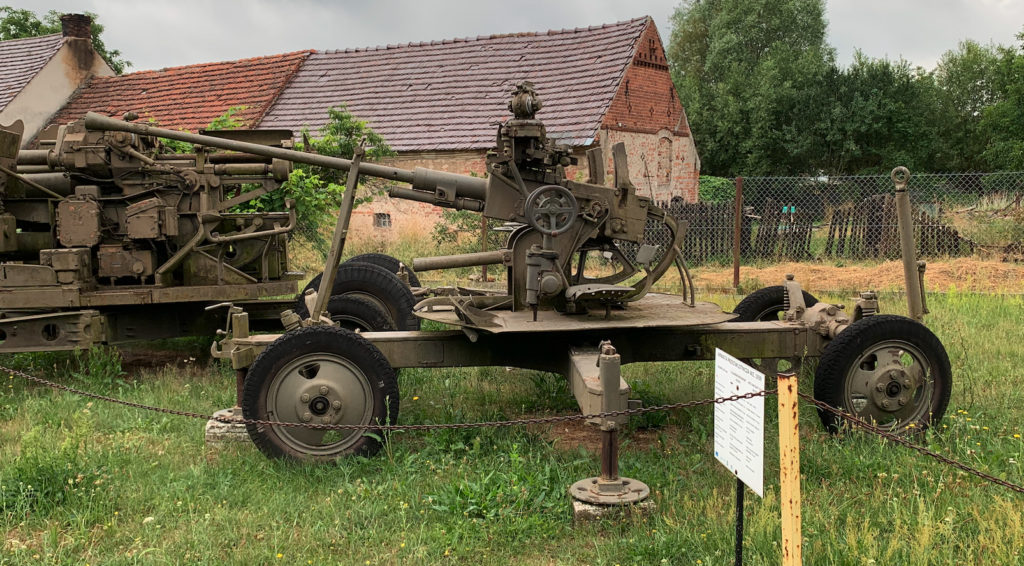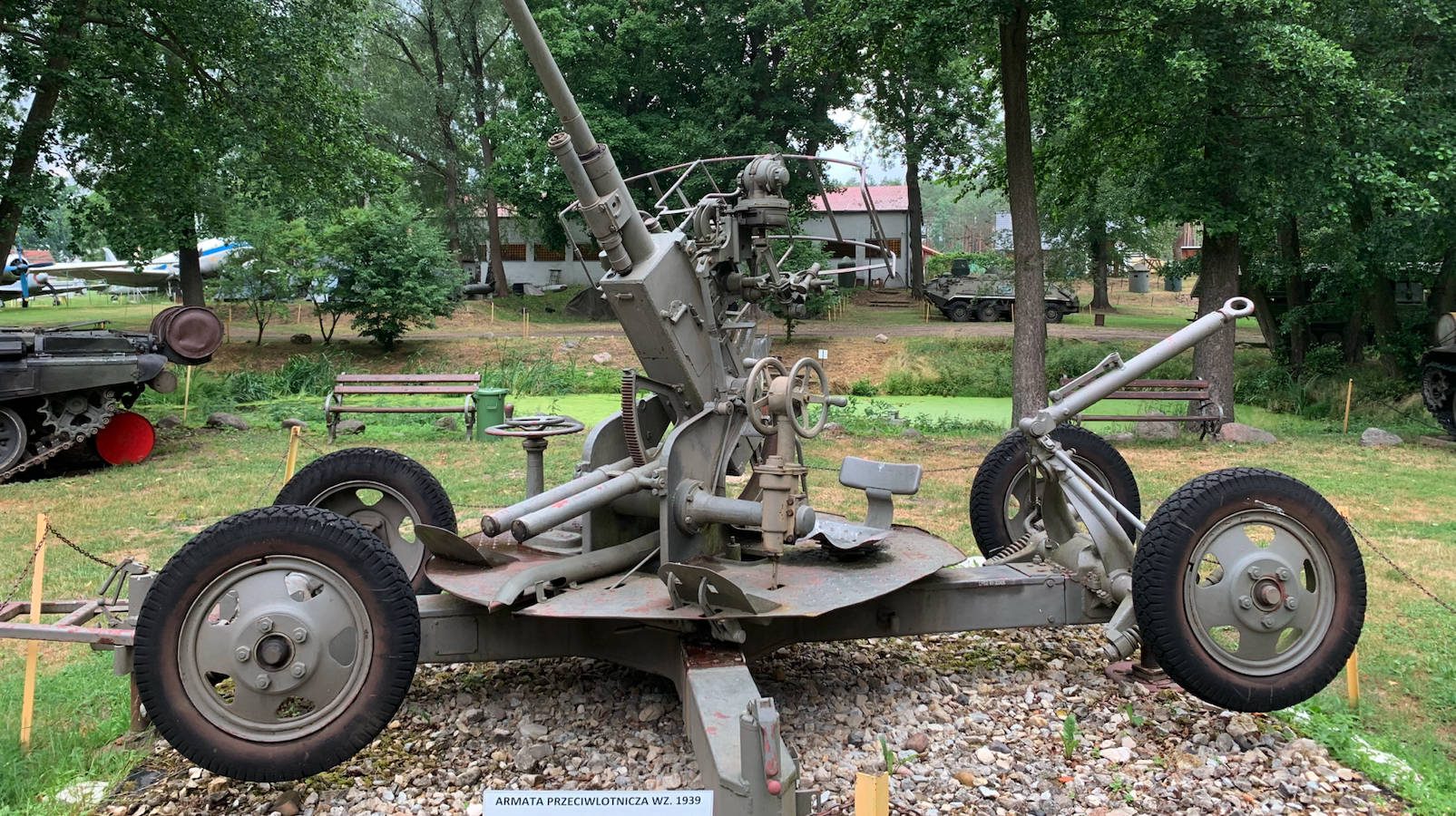Warszawa 2025-04-01
Anti-aircraft gun model 1939, caliber 37 mm.



PLOT gun wz 1939 caliber 37 mm is another example of eternal German-Russian friendship. In 1937, the Wehrmacht trained on one of the Soviet training grounds. And then the Muscovites had the opportunity to familiarize themselves with the FlaK 18/36/37 anti-aircraft gun, which they rated very well. The Muscovites decided to build their own gun based on this gun, which had to be adapted to the industrial capabilities of the Moscow state.
In January 1938, the task of building the PLOT gun was entrusted to a team of engineers headed by Mikhail N. Loginov at the Design Bureau of Factory No. 8 named after Kalinin in Podlipki near Moscow. The gun received the factory designation 61-K. The prototype of the new Soviet PLOT gun was submitted for field tests in October 1938.
The PLOT gun model 1939, caliber 37 mm, was an automatic gun, the automation of which operated on the principle of a short barrel recoil. A rifled barrel with a replaceable core tube, a vertically falling wedge lock and a hydraulic-spring return resistor were used. The feeding of cartridges to the loading chamber, closing the lock and firing were automatic. A four-wheeled chassis was used for transport, which allowed for quick transport and a small positive impact on the gun’s components. In the combat position, the gun was supported on four jacks. It was possible to fire in the marching position. The gun could have a steel protective shield mounted. The time of transition from the marching position to the combat position was 30 seconds. During World War II, 19,822 units of the PLOT wz. 1939 cannon of caliber 37 mm were produced. The cannons were used by the Red Army and the Polish People’s Army. After World War II, the cannons were used in many countries, including China, North Korea and Vietnam. Although technically the cannon is considered obsolete, some countries in Africa and Asia still have the 61-K in their warehouses or even in active service.
The cannon could effectively combat air targets flying at an altitude of up to 3,000 m and at a distance of up to 4,000 m. It was also used to combat military vehicles, including lightly armored vehicles. The cannon was not effective against tanks. The gun was equipped with an AZP-31-1 type calculator, a mechanical device used in the 37 mm anti-aircraft gun model 1939, designed to facilitate the guidance of the gun on fast-moving air targets. Its main task was to calculate lead angles, which allowed for more effective aiming and increased the probability of hitting the target. The AZP-31-1 calculator allowed for taking into account various parameters of the target’s movement, such as distance, speed or direction, which allowed for precise determination of the point at which the projectile was to meet the target. Thanks to this, the gun operators could quickly and effectively adjust the gun’s settings in dynamic combat conditions.
After the end of World War II, the Polish Army had 287 guns of this type. However, most of them were worn out and sent to mobilization warehouses. In Poland, they even started producing spare parts for these guns. Some of the production was sent to CCCP. In Poland, in 1949, there were only 40-50 pieces in stock. In 1950, due to the Korean War, the Mechanical Plant in Tarnów began licensed serial production of the guns under the codename “product S-11”. As a result, in 1956, the guns were already in the PLOT artillery units in the Land Forces and the Air Force and Anti-Aircraft Defense of the Country Area in the amount of about 700 pieces. In 1960, the Polish Army was equipped with new PLOT S-60 57 mm guns and PLOT missile sets. The 37 mm wz. 1939 cannons were gradually withdrawn from the front line. They were put into storage. In 1967, due to the war in Israel, the plans were revised. It turned out that the planes attack from low altitudes, destroy the radars of missile positions and that missile weapons are less effective than barrel weapons. In Poland, the PLOT cannons were once again returned. In the period 1967-1975, over 80 PLOT batteries were created to defend airports, command posts, firing positions of missile divisions and radar posts. In these batteries, there were PLOT cannons of 37 mm and 57 mm caliber. According to available data, the Polish Army had 800 PLOT cannons. The withdrawal of the cannons took place only in the 90s, after the change of the political situation, and mainly the fall of the Warsaw Pact. Currently, 2025, the wz 1939 37 mm gun is presented in Poland in four museums.
The 61-K gun became the basis for the development of the PLOT 70-K and W-11-M naval guns. The 61-K gun served as the basis for the creation of the ZSU-37 self-propelled anti-aircraft gun, which was mounted on the T-70 tank chassis. Technical solutions and some components were used in the development of the PLOT wz 1944 gun, double-coupled, caliber 25 mm, which received the designation 94-KM.
Data T-T of the PLOT wz 1939 37 mm gun: State CCCP. Barrel length from the breech 2,729 mm. Caliber 37 mm. Range of fire 6,700 m upwards, 8,500 m horizontally. Initial velocity of the projectile is 872 m/s (armor-piercing tracer), 880 m/s (fragmentary tracer). Length of the gun in the marching position is 5.50 m. Weight of the gun is 2,100 kg. Vertical angle of fire is from -5 degrees to +85 degrees. Horizontal angle of fire is 360 degrees. Rate of fire is 160-180 shots/minute. Time of transition from transport to combat position is 25-30 seconds. Transport speed of the gun is up to 60 km/h. Service 8 soldiers.
Written by Karol Placha Hetman

